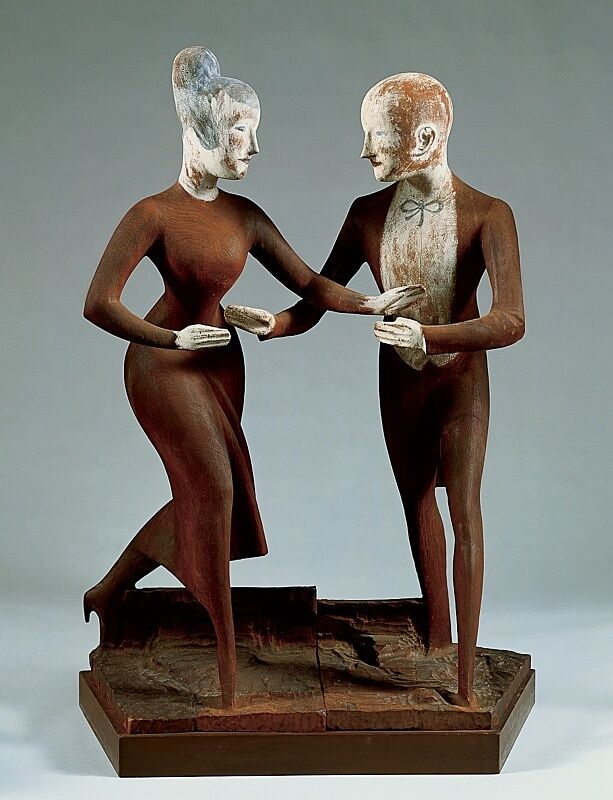Elie Nadelman, Tango, c. 1919
Be a dancer.
Elie Nadelman carved this couple dancing the tango, a ballroom dance that first appeared in 1900 in Buenos Aires, Argentina. Performed to slow, rhythmic music, the dance requires fluid movement and close contact between partners. Nadelman used natural, unpainted cherry wood to define the couple's bodies and outer garments, while their hands, faces, and the man's shirt are painted in white gesso and other colors.
Look closely at this work with your students. How does Nadelman show that these figures are dancing? What direction might they be moving? What might happen next? Have your students think about their favorite dance. What do they look like when they’re dancing? Do they wear any special clothes? As a class, have each student ‘freeze’ themselves into a position from their dance. How would they translate that ‘frozen moment’ into a sculpture?

